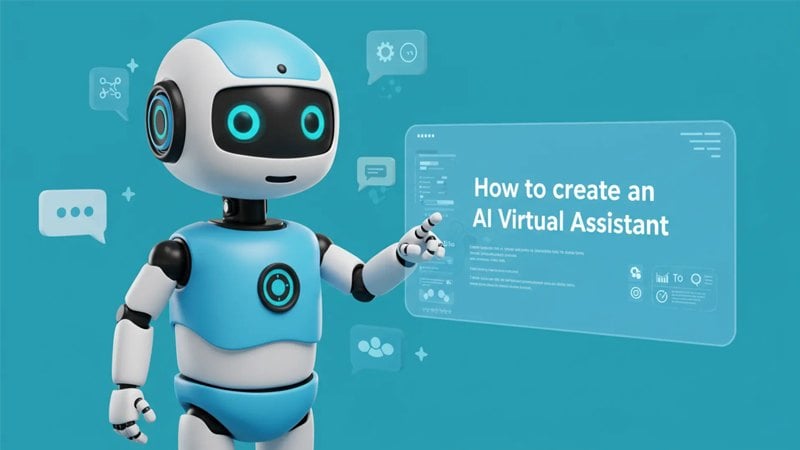AI-generated virtual characters are no longer just science fiction—they're fast becoming central to how companies communicate, engage, and sell. From digital influencers to AI assistants, the right AI tools for creating virtual characters make it easier than ever to build lifelike avatars for entertainment, eCommerce, and business services.

1. What Are AI Virtual Characters?
AI virtual characters are computer-generated personas powered by artificial intelligence that can simulate human interaction. These characters combine realistic visuals, dynamic voices, and interactive dialogue to fulfill roles once handled by real people.
They appear in:
Video games and metaverse environments
Digital customer service portals
AI marketing videos
eLearning platforms
Corporate and legal presentation tools
Unlike pre-scripted avatars, AI-based characters are capable of real-time adaptation, leveraging virtual AI tools for natural conversation, expression, and even body language—making them far more immersive and scalable.
2. Core AI Technologies Behind Virtual Character Creation
Creating a believable digital persona relies on multiple layers of technology, including:
Natural Language Processing (NLP): Enables understanding and response to human input (e.g., ChatGPT, Claude, Gemini).
Voice Generation & Cloning: Tools like ElevenLabs and Resemble.ai offer realistic and multilingual voice synthesis.
AI Animation & Motion Capture: Tools such as DeepMotion allow avatars to replicate human movement.
Generative AI: Produces visual assets, outfits, backdrops, and even personalities dynamically.
Virtual AI Tools: Combine speech, visuals, and intent recognition into seamless experiences.
These technologies power the best AI virtual assistant tools, especially for businesses that need digital receptionists, trainers, or brand ambassadors.
3. Top AI Tools for Creating Virtual Characters in 2025
A wide variety of platforms now offer specific functions that contribute to building a complete AI character. Below is a breakdown of industry-leading tools and their best use cases:
Popular Tool Types:
3D Avatar Builders: Platforms like Ready Player Me generate avatars for gaming and metaverse.
Dialogue Engines: Character.ai and GPT APIs drive personalized conversation.
Voice Tools: ElevenLabs enables realistic voiceovers and cloned voices.
AI Video Creators: Synthesia produces professional avatars for business presentations.
Animation Engines: DeepMotion and Plask AI animate characters using webcam or motion capture inputs.
Table 1: Feature Comparison of Popular AI Virtual Character Tools
| Tool Name | Functionality | Use Case | Best For |
|---|---|---|---|
| Ready Player Me | 3D avatar creation | Gaming, VR/AR | Developers & streamers |
| Character.ai | AI-driven conversations | Chatbots, roleplay | Content creators |
| Synthesia | AI video presenter avatars | Marketing, training, education | Businesses & eCommerce |
| ElevenLabs | Voice generation | Audio dubs, narration | YouTubers, podcasters |
| DeepMotion | AI animation from video | Motion capture | Game & film studios |
These tools make it possible for small businesses, solopreneurs, and enterprises to enter the virtual character space without building everything from scratch.
4. Using Virtual Characters in Business Applications
Beyond entertainment, AI virtual characters are being used in practical business contexts to save time, reduce costs, and improve customer engagement.
Real-World Applications:
AI Virtual Assistant Tools: Offer voice-activated or chatbot-style support for customer service or internal use.
eCommerce Integration: Use avatars to demo products, answer questions, and personalize the shopping experience.
AI Tools for Sales: Deploy virtual reps to deliver product pitches or collect leads through conversational interfaces.
Finance & Accounting: Use virtual characters for onboarding clients, explaining invoices, or simplifying complex tax concepts.
By combining AI tools for ecommerce, sales, and finance, companies can create fully automated yet humanlike customer experiences.
5. AI Tools That Power Broader Virtual Ecosystems
Virtual characters don't exist in isolation—they're part of an evolving AI ecosystem that touches cybersecurity, operations, and legal compliance.
Key Applications:
AI Tools for Cybersecurity: Used to protect avatars from deepfake impersonation, track behavioral patterns, and secure communications.
AI Tools for Companies: Integrate avatars with ERP or CRM platforms to streamline HR, onboarding, or training.
AI Tools for Lawyers: Enable use of digital legal assistants for contract explanations or simulated courtroom arguments.
AI Tools for Entrepreneurs: Let solo founders pitch with an AI avatar, automate personal branding, or run virtual consultations.
By tying together AI tools for entrepreneurs, lawyers, and cybersecurity, businesses can extend the reach of their avatars beyond the screen.
Table 2: Industry Use Cases for AI Virtual Characters and Matching Tools
| Industry | AI Virtual Character Role | Recommended Tools |
|---|---|---|
| eCommerce | Digital shopping guides | Synthesia, Ready Player Me |
| Finance | Explainer avatars for clients | Synthesia, Character.ai |
| Cybersecurity | Identity & behavior monitoring | DeepMotion (gesture analysis) |
| Legal | Digital legal assistants | Character.ai, GPT-based agents |
| Sales | Virtual product demos/pitches | ElevenLabs, Synthesia |
| Education | AI-powered teachers/avatars | Plask AI, DeepMotion |
These use cases highlight how AI virtual characters are quickly becoming indispensable in sectors far beyond gaming or entertainment.
6. Pros and Cons of Using AI Virtual Characters
Before you invest in building or buying AI virtual character solutions, it's important to weigh the advantages and limitations.
Benefits:
24/7 Availability
Scalable across departments and platforms
Lower cost compared to human staffing
Customizable personalities, languages, and styles
Easier global branding with multilingual avatars
Drawbacks:
High initial setup or subscription cost
Risk of uncanny valley (awkward realism)
Requires frequent updates for accuracy and cultural relevance
Potential privacy and security concerns
The right choice of AI virtual assistant tools or virtual AI tools can mitigate many of these challenges.
7. How to Choose the Right AI Tool Based on Your Industry
Different tools serve different needs. Here's how to approach selection:
For Creatives & Content Creators: Use Character.ai + ElevenLabs for dynamic performance
For Businesses & Startups: Synthesia + DeepMotion or Ready Player Me for pitch decks, training, and marketing
For Law & Finance: GPT-based dialogue engines with verified avatars to ensure clarity and compliance
For Game Devs & Streamers: Plask AI + DeepMotion for realism and immersive interaction
You can also combine specialized AI tools for companies with general product sourcing and customer engagement AI stacks to build end-to-end automation pipelines.
FAQ: Frequently Asked Questions
Q1: Are AI virtual characters hard to build?
A1: No. Many platforms offer no-code interfaces, drag-and-drop design tools, and prebuilt templates.
Q2: Can I use one tool for both animation and voice?
A2: Some platforms like Synthesia offer both, but pairing tools (e.g., DeepMotion + ElevenLabs) gives more control and realism.
Q3: What's the best AI tool for eCommerce avatars?
A3: Synthesia and Ready Player Me are top choices for product presentations and virtual assistants.
Q4: Do AI tools for lawyers include virtual characters?
A4: Yes, some legal tech stacks now include AI avatars for presenting case details or automating consultation interfaces.
Q5: Are there free AI virtual character tools for startups?
A5: Yes, many offer free tiers—Character.ai, Ready Player Me, and trial versions of Synthesia and Plask AI are startup-friendly.
Conclusion
The future of business, education, and entertainment is increasingly virtual—and AI-powered avatars are leading the way. Whether you're in sales, law, education, or eCommerce, AI tools for creating virtual characters can help you automate engagement, boost your brand, and scale operations with human-like interaction.
Now is the perfect time to explore these tools and unlock the full potential of your own digital workforce.




